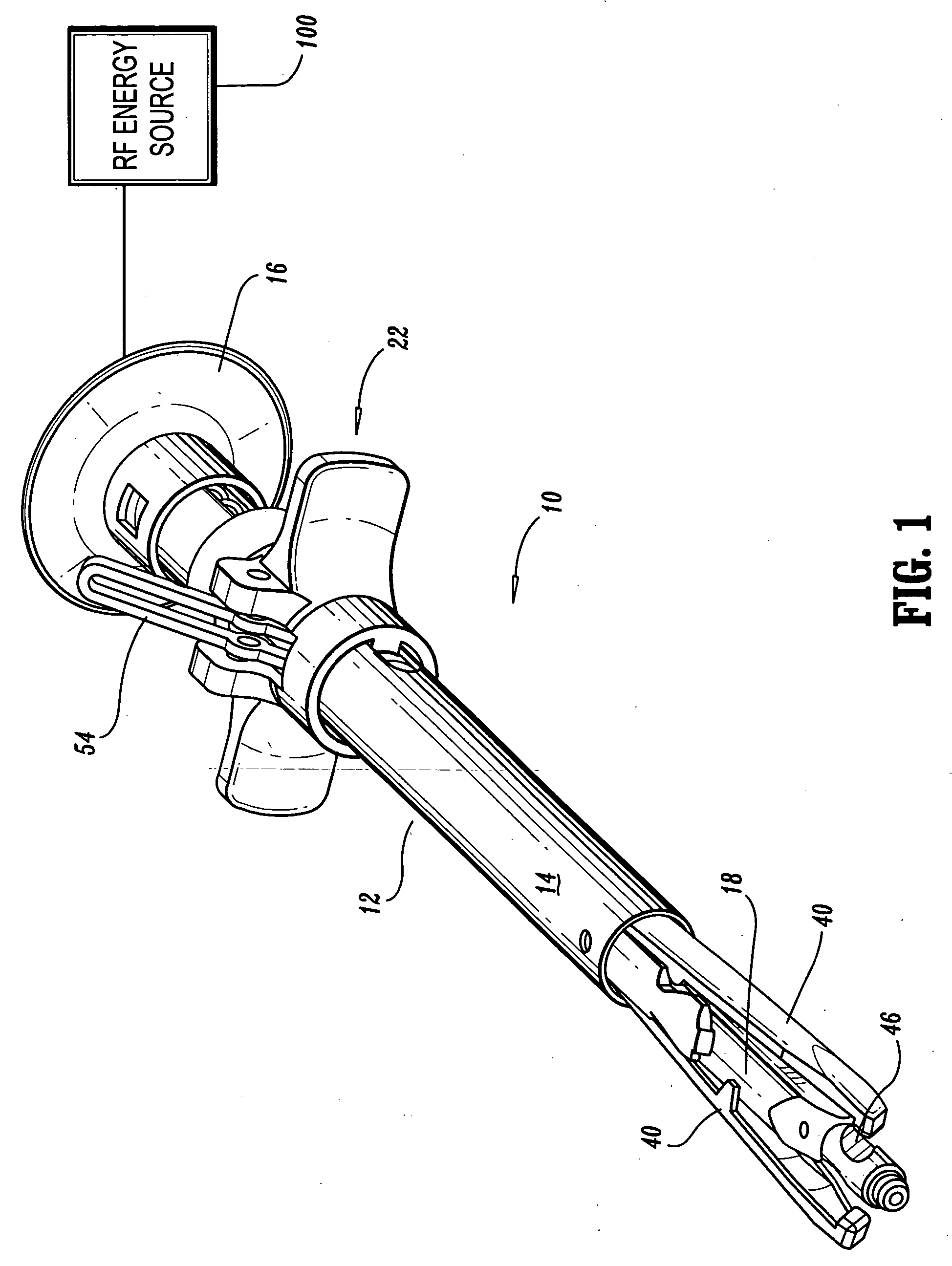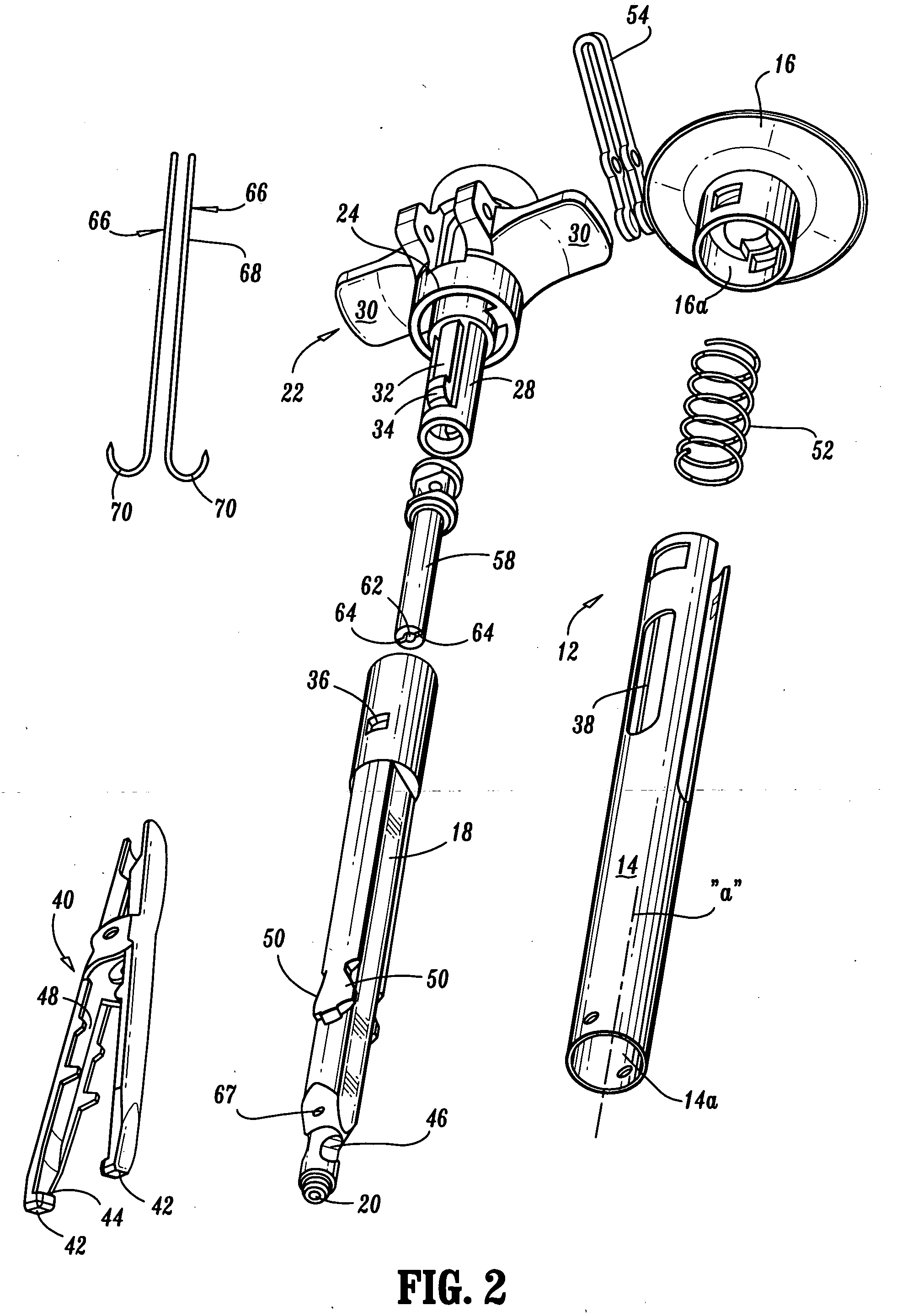Arterial hole closure apparatus
- Summary
- Abstract
- Description
- Claims
- Application Information
AI Technical Summary
Benefits of technology
Problems solved by technology
Method used
Image
Examples
Embodiment Construction
[0025] In general, the object of the apparatus is to close an access opening in a tissue wall following a surgical procedure (e.g., a coronary catheterization procedure, bowel closure, gall bladder closure, port side closure, hernia closure, vein closure, trauma induced openings and defects) to stem the flow of blood or other biological liquid through the opening while permitting post operative flow through the tissue conduit. In the drawings and in the description which follows, the term “proximal”, as is traditional, will refer to that end of the apparatus, or component thereof, which is closer to the operator, while the term “distal” will refer to that end of the apparatus, or component thereof, which is more remote from the operator.
[0026] Referring now in detail wherein like reference numerals identify similar components throughout the several views, FIG. 1 illustrates in perspective the apparatus in accordance with the principles of the present disclosure. Although the presen...
PUM
 Login to View More
Login to View More Abstract
Description
Claims
Application Information
 Login to View More
Login to View More - Generate Ideas
- Intellectual Property
- Life Sciences
- Materials
- Tech Scout
- Unparalleled Data Quality
- Higher Quality Content
- 60% Fewer Hallucinations
Browse by: Latest US Patents, China's latest patents, Technical Efficacy Thesaurus, Application Domain, Technology Topic, Popular Technical Reports.
© 2025 PatSnap. All rights reserved.Legal|Privacy policy|Modern Slavery Act Transparency Statement|Sitemap|About US| Contact US: help@patsnap.com



